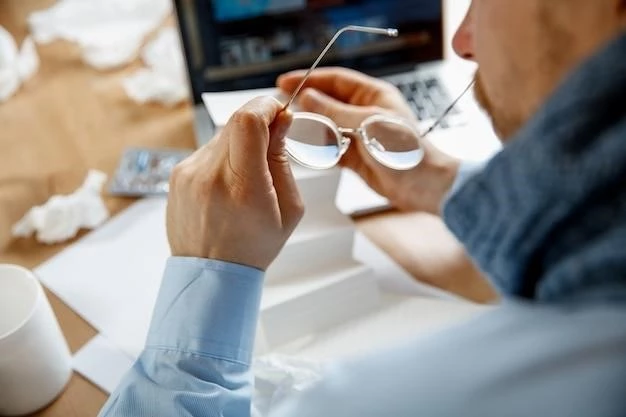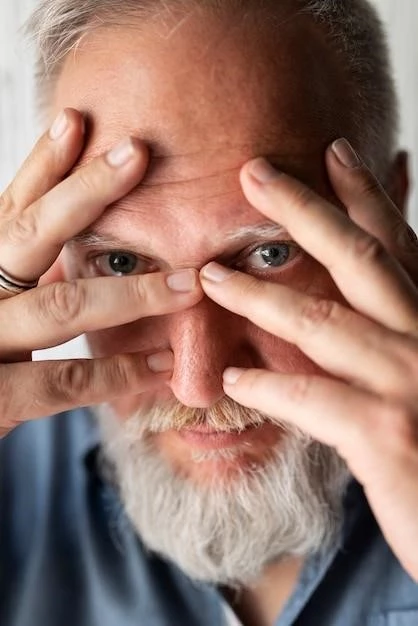Understanding Cataracts⁚ Causes and Treatments
Being aware of the causes of cataracts can help in early detection. Explore the various treatment options available to improve your vision.
What are Cataracts?
Cataracts are a common eye condition that cause clouding of the lens‚ leading to blurry vision and difficulty seeing clearly. They can develop slowly over time‚ impacting daily activities. If you experience any vision changes‚ consult an eye care professional for evaluation. Cataracts often occur due to aging‚ but other factors like diabetes‚ smoking‚ and UV exposure can also contribute. Understanding cataracts is crucial for early detection and timely treatment. Regular eye exams and maintaining overall eye health can help in managing cataracts effectively. Embrace lifestyle habits that promote eye wellness to reduce the risk of cataract development. Stay informed about cataracts to protect your vision and seek appropriate treatment when needed.
Causes of Cataracts
Understanding the causes of cataracts is key to prevention and early intervention. While aging is a primary factor in cataract development‚ other causes include genetic predisposition‚ eye injuries‚ certain medications like steroids‚ and medical conditions such as diabetes. Lifestyle habits like smoking‚ excessive alcohol consumption‚ and prolonged exposure to sunlight without adequate eye protection can also increase the risk of cataracts. Maintaining a healthy diet rich in antioxidants‚ protecting your eyes from harmful UV rays‚ and managing underlying health conditions can help reduce the likelihood of developing cataracts. Stay proactive in addressing risk factors to safeguard your vision health and minimize the impact of cataracts on your daily life.
Treatment Options for Cataracts
When it comes to treating cataracts‚ surgery is the most common and effective option. Cataract surgery involves removing the cloudy lens and replacing it with an artificial intraocular lens. This procedure is generally safe and successful‚ with high rates of improving vision clarity. There are also advanced techniques like laser-assisted cataract surgery that offer precise results and quicker recovery times. Consulting with an ophthalmologist will help determine the best treatment approach based on the severity of your cataracts and individual eye health. Prioritize regular eye exams to monitor cataract progression and discuss treatment options with your eye care provider to maintain optimal vision and quality of life.
Effective Ways to Manage Alopecia
Explore lifestyle changes‚ stress management‚ and specialized treatments to address hair loss effectively. Prioritize scalp health and consult with a dermatologist for personalized solutions.
Understanding Alopecia
Alopecia‚ often referred to as hair loss‚ can have various causes such as genetics‚ hormonal changes‚ autoimmune conditions‚ and stress. Understanding the type of alopecia you have is essential for determining the appropriate treatment approach. Common types include alopecia areata‚ androgenetic alopecia‚ and telogen effluvium. Consult a dermatologist to diagnose your specific type of hair loss and explore personalized solutions. Remember‚ early intervention and consistent care can help manage alopecia effectively. Embrace a holistic approach that combines medical treatments‚ lifestyle adjustments‚ and emotional support to promote hair regrowth and maintain scalp health.
Hair Regrowth Solutions for Alopecia
Regaining hair growth with alopecia often involves a combination of treatments tailored to your specific type of hair loss. Options include topical solutions like minoxidil‚ oral medications such as finasteride‚ and procedures like PRP therapy or hair transplant surgery. Additionally‚ maintaining a balanced diet rich in essential nutrients like vitamins D‚ E‚ and biotin can support hair health and growth. Scalp massages‚ low-level laser therapy‚ and stress management techniques may also aid in stimulating hair regrowth. Work closely with a dermatologist to develop a comprehensive plan that addresses your unique needs and preferences. Remember to be patient and consistent with your chosen regrowth solutions for optimal results.

Sclerodactyly⁚ Symptoms and Diagnosis
Learn about the signs of sclerodactyly and the diagnostic process to accurately identify this condition. Early detection is key for effective management.
Recognizing Sclerodactyly Symptoms
Sclerodactyly symptoms include skin tightening‚ thickening‚ and limited mobility in the fingers and hands. Other signs may involve Raynaud’s phenomenon‚ joint pain‚ and nail changes. If you notice these symptoms‚ seek a rheumatologist for evaluation and proper diagnosis. Early detection allows for timely management to prevent further complications. Monitoring changes in skin texture‚ flexibility‚ and associated discomfort can aid in recognizing sclerodactyly early. Stay attentive to your body’s signals and communicate any concerns with your healthcare provider for personalized care and guidance. Embrace a proactive approach to managing sclerodactyly symptoms for better quality of life and improved hand function.
Diagnosis of Sclerodactyly
Diagnosing sclerodactyly involves a comprehensive examination by a rheumatologist or dermatologist. Tests like skin biopsies‚ blood work to assess autoantibodies‚ and imaging studies may be used to confirm the diagnosis. Your healthcare provider will evaluate your symptoms‚ medical history‚ and perform a physical examination to identify sclerodactyly. Early diagnosis is crucial for initiating appropriate treatment and managing the condition effectively. Stay proactive in seeking medical attention if you experience symptoms like skin tightening or hand stiffness. Openly communicate with your healthcare team to ensure accurate diagnosis and personalized care; Understanding the diagnostic process can empower you to take control of your health and well-being when dealing with sclerodactyly.
Prevention Tips for Cataract Development
Adopt healthy habits like protecting your eyes from UV rays‚ quitting smoking‚ and consuming a balanced diet rich in antioxidants to reduce cataract risk. Regular eye check-ups are key.
Lifestyle Modifications for Cataract Prevention
Make lifestyle changes to reduce cataract risk by wearing sunglasses‚ maintaining a healthy diet‚ and quitting smoking. Stay active‚ manage chronic conditions‚ and prioritize eye health for optimal vision. Incorporate foods rich in vitamins A‚ C‚ and E‚ and protect your eyes from harmful UV rays with sunglasses and hats. Engage in regular physical activity to enhance overall health and eye function. Manage conditions like diabetes and hypertension effectively to lower cataract risk. By making these lifestyle modifications‚ you can safeguard your vision and promote long-term eye wellness. Consult with an eye care professional for personalized recommendations on preventing cataract development through healthy living choices.
Living with Sclerodactyly⁚ Coping Strategies
Discover practical ways to manage sclerodactyly symptoms while maintaining hand function and overall quality of life. Seek support and adapt daily activities for comfort.
Coping with the Challenges of Sclerodactyly
Living with sclerodactyly can present physical and emotional hurdles. Adopt adaptive tools‚ seek occupational therapy‚ practice self-care‚ and join support groups to navigate challenges successfully. Embrace modifications in daily routines‚ prioritize hand care‚ and communicate openly with healthcare providers. Enhance mobility through gentle exercises‚ protect skin integrity‚ and manage pain effectively. Emotional well-being is crucial‚ so engage in activities that bring joy and relaxation; Connecting with others facing similar experiences can provide valuable insights and encouragement. By proactively addressing both physical and emotional aspects of sclerodactyly‚ you can enhance your quality of life and approach challenges with resilience.
